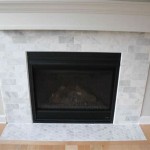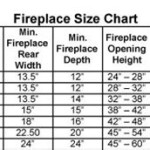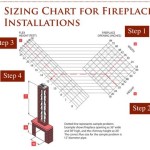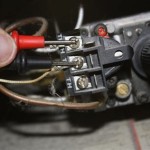How High Should a TV Be Mounted Above a Fireplace?
Mounting a television above a fireplace is a popular design choice for many homeowners. It offers a visually appealing focal point and can save space. However, determining the optimal height for mounting a television in this configuration requires careful consideration of viewing comfort, potential health implications, and the specific dimensions of the viewing area. Finding the right balance is crucial for an enjoyable and ergonomic viewing experience. Ignoring these factors can lead to neck strain, eye fatigue, and an overall uncomfortable viewing experience.
The placement of a television significantly impacts how comfortably individuals can view content for extended periods. Mounting a television too high above a fireplace often necessitates tilting the head upward, which can strain the neck muscles. This prolonged upward gaze can lead to chronic neck pain, headaches, and even spinal misalignment. The optimal viewing angle is generally considered to be slightly below eye level, allowing the eyes to naturally focus on the screen without undue strain.
Furthermore, the heat generated by a fireplace can potentially damage the television's internal components over time. While modern fireplaces are often designed with heat shielding and venting mechanisms, the continuous exposure to elevated temperatures can still negatively affect the television's lifespan and performance. Therefore, understanding the potential risks and implementing preventative measures is essential for protecting the investment in the television.
Key Point 1: Determining Optimal Viewing Height Based on Seating Arrangement
The primary factor influencing the appropriate television mounting height is the seating arrangement within the room. The goal is to position the television screen at a comfortable viewing angle for individuals seated in their typical viewing positions. This involves measuring the distance from the floor to the average eye level of viewers when seated. This measurement serves as a baseline for determining the ideal center point of the television screen.
To obtain an accurate measurement of eye level, have individuals sit in their usual viewing positions on the sofa or chairs. Use a measuring tape to determine the distance from the floor to the center of their eyes. Average these measurements together to arrive at a representative eye level for the primary viewers. This average eye level will be a critical data point in calculating the optimal television mounting height.
Once the average eye level is determined, it is necessary to consider the size of the television screen. Larger screens typically require a slightly higher mounting position to ensure the entire screen is within the field of view. As a general guideline, the center of the television screen should be positioned within a range of approximately 4 to 12 inches above the average eye level. This range allows for comfortable viewing without excessive neck strain.
For example, if the average eye level of seated viewers is 42 inches, the center of the television screen should ideally be positioned between 46 and 54 inches above the floor. This range provides flexibility to adjust the mounting height based on personal preference and the specific characteristics of the room. It is recommended to test different mounting heights within this range to determine the most comfortable viewing position.
It is also important to consider the depth of the fireplace mantel. A deeper mantel can potentially obstruct the lower portion of the television screen if the television is mounted too low. In such cases, it may be necessary to raise the television slightly to ensure a clear and unobstructed view. However, it is crucial to maintain a balance between clearing the mantel and avoiding excessive neck strain.
Key Point 2: Mitigating Heat-Related Risks and Safety Considerations
The heat generated by a fireplace poses a potential threat to the longevity and performance of a television mounted above it. Elevated temperatures can negatively affect the television's internal components, leading to premature failure or reduced picture quality. Therefore, it is essential to implement measures to mitigate heat-related risks and ensure the safety of the television.
The distance between the top of the fireplace and the bottom of the television is a crucial factor in determining the degree of heat exposure. A minimum clearance of at least 12 inches is generally recommended to allow for adequate heat dissipation. This clearance helps to prevent excessive heat from reaching the television's internal components.
Furthermore, the presence of a mantel can significantly reduce the amount of heat that reaches the television. A mantel acts as a barrier, deflecting heat away from the television screen and upward into the room. A wider and deeper mantel provides greater protection against heat exposure. If the fireplace lacks a substantial mantel, consider adding one to improve heat shielding.
Another important consideration is the type of fireplace being used. Gas fireplaces typically generate less heat than wood-burning fireplaces. If using a wood-burning fireplace, it is recommended to install a chimney liner to improve ventilation and reduce the amount of heat released into the room. Additionally, ensure that the fireplace is properly maintained and cleaned regularly to prevent the buildup of creosote, which can increase the risk of chimney fires and excessive heat generation.
It is also advisable to monitor the temperature around the television while the fireplace is in use. Use a thermometer to measure the temperature at various points near the television screen and on the back of the television. If the temperature exceeds 100 degrees Fahrenheit, it is necessary to take steps to reduce heat exposure, such as increasing the distance between the fireplace and the television, adding a mantel, or reducing the intensity of the fireplace.
Key Point 3: Addressing Potential Neck Strain and Ergonomic Concerns
Mounting a television too high above a fireplace can lead to chronic neck strain and discomfort. The prolonged upward gaze required to view the screen can put undue stress on the neck muscles, resulting in pain, stiffness, and headaches. Therefore, it is essential to prioritize ergonomic considerations and ensure that the television is positioned at a comfortable viewing angle.
The optimal viewing angle is generally considered to be between 0 and 15 degrees below eye level. This angle allows the eyes to naturally focus on the screen without excessive neck movement. When the television is mounted too high, the viewer is forced to tilt their head upward, which can strain the neck muscles and compress the cervical spine.
To minimize neck strain, consider using a tilting television mount. A tilting mount allows the viewer to adjust the angle of the television screen, compensating for the elevated mounting position. By tilting the screen downward, the viewer can maintain a more natural and comfortable viewing angle, reducing the need to tilt their head upward.
Another strategy for reducing neck strain is to use a larger television screen. A larger screen will fill a greater portion of the viewer's field of vision, reducing the need to strain their neck to see the entire image. However, it is important to consider the viewing distance when selecting a screen size. A larger screen may be overwhelming if the viewing distance is too short.
Furthermore, ensure that the seating arrangement is conducive to comfortable viewing. The sofa or chairs should be positioned at an appropriate distance from the television screen. The viewing distance should be approximately 1.5 to 2.5 times the diagonal screen size of the television. This distance allows for comfortable viewing without straining the eyes or neck.
Regularly take breaks during extended viewing sessions to stretch and relax the neck muscles. Simple neck exercises, such as tilting the head from side to side and rotating the neck in a circular motion, can help to alleviate tension and prevent stiffness. Additionally, maintain good posture while viewing television to minimize strain on the neck and back muscles.
Ultimately, the optimal height for mounting a television above a fireplace is a balance between aesthetics, safety, and ergonomics. By carefully considering the seating arrangement, heat-related risks, and potential neck strain, it is possible to achieve a comfortable and enjoyable viewing experience.
Can I Mount A Tv Over My Fireplace Heatilator

Can I Mount A Tv Over My Fireplace Warming Trends

Can You Put An Electric Fireplace Under A Tv And Minimum Distance

Is Your Tv Too High Learn Ergo

Can I Mount My Tv Above The Fireplace

Mounting Your Tv Above Fireplace

Safely Mount A Tv Above An Electric Fireplace Touchstone Home S Inc

Matching Your Tv Size To Fireplace

Things To Consider Before Mounting Your Tv Over Fireplace

How High Should A Tv Be Mounted And What Is The Ideal Viewing Distance Cepro
Related Posts








